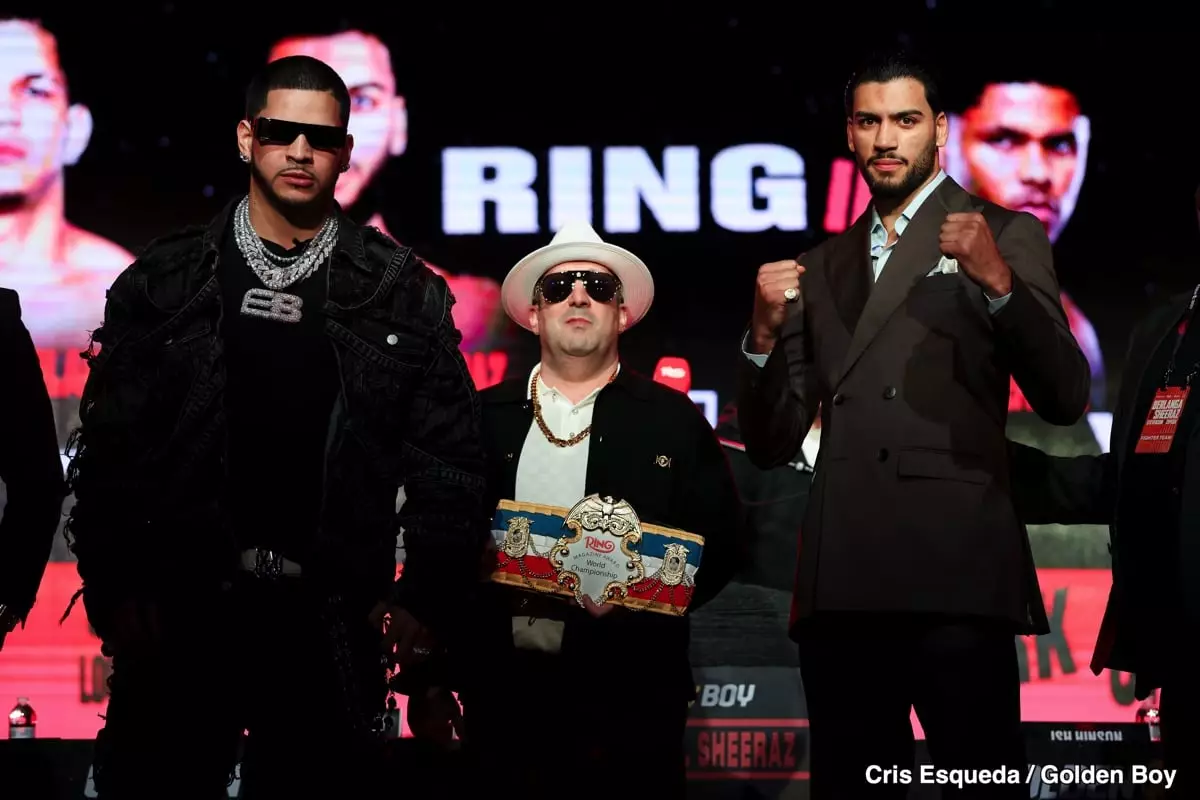In combat sport, the environment plays as crucial a role as the fighters themselves. The deliberate change of the ring size from 20 to 18 feet for the upcoming bout between Edgar Berlanga and Hamzah Sheeraz exemplifies this principle vividly. This tactical decision signals a shift in strategy, emphasizing aggression and pressure as central themes. It underscores that conditions outside the fighters’ skill sets can be manipulated to favor a specific style or outcome. Berlanga, known for his ferocity and power, views the reduced fighting area as an opportunity to smother and break down his opponent. The smaller ring acts as an extra weapon in his arsenal, forcing Sheeraz into exchanges he might prefer to avoid, and heightening the chance for an early knockout. This move demonstrates a clear understanding that controlling the space can turn a fight’s tide, transforming it from a mere contest of punches to a battle of tactical mastery.
The Psychological Warfare and the Fight Strategy
Berlanga’s confident declaration of “breaking him up” reveals more than just his fighting style; it underscores the mental aspect of the bout. Such statements serve as psychological tactics meant to unsettle the opponent while bolstering the confidence of the aggressor. The intent is to amplify pressure, both physically and mentally, making Sheeraz feel confined, overwhelmed, and ultimately unable to execute his game plan effectively. Meanwhile, Sheeraz’s approach appears pragmatic — he refuses to underestimate Berlanga, acknowledging his punching power but emphasizing his commitment to fighting honestly. This clash of mentalities highlights the importance of psychological resilience in boxing. A smaller ring intensifies this aspect, as fighters must maintain composure amid increased chaos and proximity. In essence, this bout isn’t merely about physical prowess but also about asserting psychological dominance by controlling not only the fight but the environment in which it unfolds.
The Stakes: Beyond the Immediate Fight
While Berlanga and Sheeraz prepare for their eliminator, the broader implications extend far beyond the ring. For Sheeraz, securing a victory isn’t just about winning a fight; it’s about positioning himself for a shot at superstardom. A win could catapult him into discussions for a title shot against Canelo Alvarez, the face of modern boxing. For Berlanga, a decisive victory could reaffirm his reputation as a power puncher and elevate him further into the elite super middleweights. However, the stakes also involve strategic career moves influenced by outside interests — such as the ambitions of promoter Turki Alalshikh, who seems intent on shaping the pathway to bigger fights, including the possibility of a high-profile bout against Canelo. Thus, the ring size and fight tactics are intertwined with these larger career ambitions, making the bout a crucial chess move in the ongoing game of boxing politics and prizefighting.
Potential Impact and Future Trajectories
The significance of this fight transcends the immediate result. A persuasive performance from Berlanga exploiting the small ring could reinforce his reputation as a ferocious and unstoppable force at 168. Conversely, a strategic outbox or upset by Sheeraz might redefine perceptions and open new avenues. Notably, Sheeraz’s team, led by trainer Andy Lee, appears aware of the need to surprise and adapt, hinting at a game plan designed to neutralize Berlanga’s power. The outcome could serve as a blueprint for future fights where environment manipulation becomes part of the tactical repertoire. Moreover, with the promise of lucrative opportunities hanging in the balance, both fighters are aware that a single performance can alter their destinies, shaping the future of super middleweight boxing and possibly shaking up the current hierarchy.
This upcoming bout exemplifies how strategic environment manipulation — selecting the ring size — can be just as pivotal as the fighters’ physical skill. Berlanga’s confidence in pressuring Sheeraz in an 18-foot space demonstrates a keen understanding of how fighters must adapt to maximize advantages. Meanwhile, Sheeraz’s resilience and acknowledgment of the challenge ahead emphasize that victory will depend on mental fortitude as much as technical prowess. In a sport where moments of brilliance often hinge on minor tactical decisions, it is clear that the future of mid-tier to elite boxing may well be shaped by how fighters and promoters manipulate every element within their control. This fight isn’t just a test of punches; it’s a showcase of strategic dominance, where control over the tiniest of details could determine who ascends to the pinnacle of the sport.

